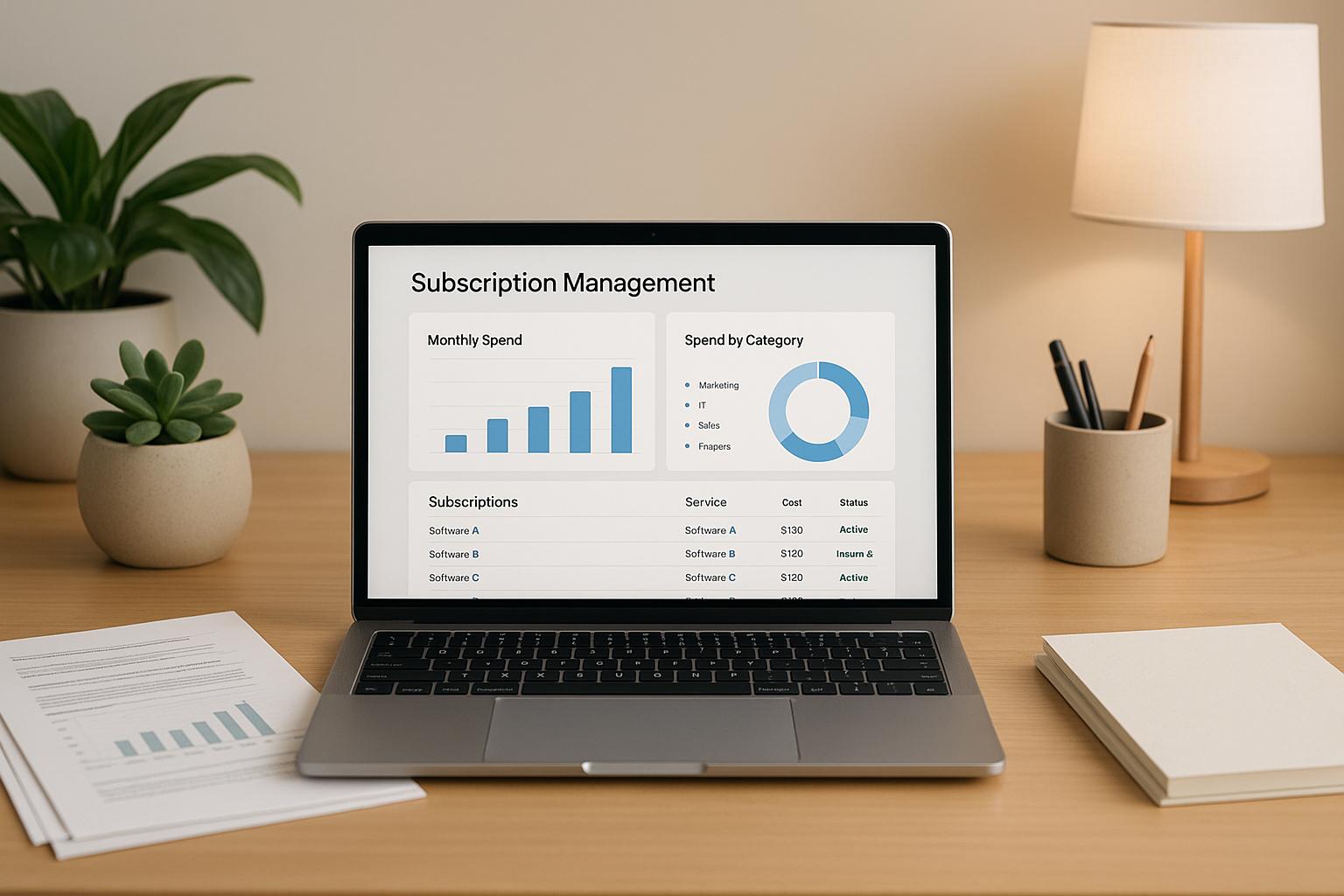After-Tax Cost of Debt: Impact on WACC

The after-tax cost of debt directly lowers borrowing expenses by accounting for tax savings from interest deductions. This metric is critical for calculating your Weighted Average Cost of Capital (WACC), which determines the minimum return investors and lenders expect. Lowering your WACC can improve your company’s valuation and make financing decisions more efficient.
Key points:
- After-tax cost of debt formula: Pre-tax cost of debt × (1 - Tax rate).
- WACC formula: Combines equity and debt costs, adjusted for tax savings, to reflect overall capital costs.
- Tax shield impact: Reduces WACC by lowering the effective cost of debt, improving cash flow valuation.
For growth-stage companies, understanding and optimizing these factors is essential for funding decisions, valuation, and long-term planning.
How to Calculate After-Tax Cost of Debt
To determine the after-tax cost of debt, you'll need three key inputs: the pre-tax cost of debt, the effective tax rate, and the formula that ties them together. These calculations are critical for accurate WACC analysis. Let’s break down each component.
After-Tax Cost of Debt Formula
The formula is straightforward:
After-tax cost of debt = Pre-tax cost of debt × (1 – Tax rate)
This equation accounts for the tax shield, effectively lowering the cost of borrowing. The term (1 – Tax rate) represents the portion of interest expenses that the company actually pays after factoring in tax savings. For instance, if a company has a pre-tax cost of debt of 8% and an effective tax rate of 21%, the after-tax cost of debt would be 6.32% (8% × 0.79). This reduction reflects the tax benefit of interest deductions.
Finding Pre-Tax Cost of Debt
The pre-tax cost of debt is the interest rate a company pays on its debt before considering tax benefits. Depending on the company’s debt structure, you can calculate it using one of two methods:
-
Interest Expense Approach
Divide the annual interest expense by the total debt. For example, if a company incurs $200,000 in annual interest on $2,500,000 of total debt, the pre-tax cost of debt is 8% ($200,000 ÷ $2,500,000). -
Yield to Maturity (YTM) Approach
For companies with publicly traded bonds, YTM offers a market-based estimate that reflects prevailing conditions and credit risk.
When performing these calculations, include all interest-bearing debt, such as bank loans, corporate bonds, and lines of credit. Exclude liabilities that don’t accrue interest, like accounts payable or accrued expenses.
Finding the Effective Tax Rate
The effective tax rate is calculated by dividing total tax expense by taxable income. This rate accounts for both federal and state taxes. For example, if a company has a tax expense of $210,000 on taxable income of $1,000,000, the effective tax rate is 21% ($210,000 ÷ $1,000,000). Keep in mind, this example assumes no state taxes, which is uncommon for U.S. companies. Businesses operating in states with additional taxes may face a combined rate higher than the federal rate.
Key Components at a Glance
| Component | Formula/Method | Example |
|---|---|---|
| Pre-tax cost of debt | Interest Expense ÷ Total Debt OR Bond YTM | 8% |
| Effective tax rate | Total Tax Expense ÷ Taxable Income | 21% (federal) + state taxes |
| After-tax cost of debt | Pre-tax cost × (1 – Tax rate) | 6.32% (8% × 0.79) |
To avoid errors, always use the effective tax rate rather than the statutory rate, and ensure you’re accounting for the full tax landscape. As tax laws and company data shift, regularly updating your calculations is essential for maintaining accurate WACC analysis. These steps ensure that your after-tax cost of debt integrates seamlessly into the broader WACC framework.
After-Tax Cost of Debt in WACC Calculation
The after-tax cost of debt plays a key role in accurately calculating the Weighted Average Cost of Capital (WACC). This tax-adjusted figure reflects the real cost of borrowing for companies and is essential for making well-informed financial choices. Let’s break down how it fits into the broader WACC framework.
WACC Formula Components
The WACC formula incorporates the after-tax cost of debt to provide a realistic picture of a company’s capital costs:
WACC = (E/V × Re) + (D/V × Rd × (1 - Tc))
Here’s what each component represents:
- E/V: The proportion of equity financing
- D/V: The proportion of debt financing
- Re: The cost of equity
- Rd: The pre-tax cost of debt
- (1 - Tc): The adjustment for the corporate tax rate (Tc) to calculate the after-tax cost of debt
This formula weights each source of financing by its share of the company’s total market value. For example, if a company has $6 million in equity and $4 million in debt, the equity weight is 0.6, and the debt weight is 0.4. This ensures the WACC reflects the actual capital structure rather than treating all sources equally.
| Component | Formula Element | Example Value |
|---|---|---|
| Equity Weight | E / V | $6M / $10M = 0.6 |
| Debt Weight | D / V | $4M / $10M = 0.4 |
| Cost of Equity | Re | 12% |
| Pre-tax Cost of Debt | Rd | 7% |
| Tax Rate | Tc | 25% |
| After-tax Cost of Debt | Rd × (1 - Tc) | 7% × (1 - 0.25) = 5.25% |
Tax Shield Effect on Cost of Capital
The tax shield effect reduces the effective cost of capital by allowing companies to deduct interest payments from taxable income. Essentially, the tax rate multiplied by the interest expense creates this benefit, making debt financing less expensive.
The size of the tax shield depends on factors like the company’s tax rate and debt levels. Higher tax rates increase the benefit, while companies with tax losses or credits might not fully realize it. This is especially relevant for growth-stage companies whose tax situations often shift as they move from losses to profitability.
In the U.S., the federal corporate tax rate of 21% forms the baseline for this benefit, but state taxes can push the effective rate higher. Companies operating in multiple states must calculate their blended tax rate carefully for precise WACC calculations.
WACC Example With and Without Tax Shield
Let’s see how the tax shield impacts WACC calculations using the example values from the table:
-
With tax shield:
WACC = (0.6 × 12%) + (0.4 × 7% × (1 - 0.25)) = 7.2% + 2.1% = 9.3% -
Without tax shield:
WACC = (0.6 × 12%) + (0.4 × 7%) = 7.2% + 2.8% = 10.0%
The difference of 0.7 percentage points translates to $70,000 in annual savings for a company with a $10 million enterprise value.
For a larger company with $500 million in equity, $300 million in debt, an 8% cost of equity, a 5% cost of debt, and a 25% tax rate, the WACC drops from 6.875% without the tax shield to 6.41% with it. On an $800 million enterprise value, this would mean over $3.7 million in annual savings.
Impact on Business Valuation and Decision-Making
The after-tax cost of debt plays a key role in shaping a business’s valuation, investment choices, and capital structure strategies. By understanding these impacts, companies can make informed financial decisions that drive long-term growth. These valuation effects directly influence strategic decisions about capital structure, which we’ll explore further.
Effect on Business Valuation and Investment Decisions
In discounted cash flow (DCF) valuations, the after-tax cost of debt directly affects the discount rate used to calculate the value of future cash flows. Tax-deductible interest payments lower the weighted average cost of capital (WACC), which increases the present value of those cash flows and, in turn, the overall business valuation.
For example, imagine a growth-stage technology company considering a $50 million acquisition. Without factoring in tax benefits, a WACC of 12% might justify a valuation of $40 million for the target company. But if the WACC drops to 10.5% due to tax-deductible interest, the valuation could rise by $5 million. This shift can significantly influence acquisition decisions.
Tax shields also play a critical role in investment decision-making, especially when comparing financing options. Take a manufacturing company planning a $10 million equipment purchase. If the company finances it with debt at 6% interest and operates under a 25% tax rate, the effective cost of that debt drops to 4.5%. This reduced cost can make previously marginal projects financially viable, opening up new growth opportunities.
Lower WACC metrics not only improve valuations but also encourage businesses to reassess their debt levels and capital allocation strategies to support sustained growth. Companies with significant tax shields can often take on more debt to fund expansion projects.
Optimizing Capital Structure in Growth-Stage Companies
The connection between valuation and capital structure leads to strategies for balancing risk and tax advantages. Growth-stage companies face distinct challenges when determining the right debt-to-equity mix. Unlike mature businesses with steady cash flows, these companies must weigh the tax benefits of debt against the flexibility needed for rapid scaling.
The ideal capital structure evolves as businesses mature. Early-stage companies often rely on equity financing due to unpredictable cash flows and higher risks. As revenues stabilize and profitability becomes more predictable, introducing debt can help lower the overall cost of capital.
Tax planning adds another layer of complexity. Growth companies with net operating losses may not immediately benefit from tax shields. It’s crucial to structure capital in a way that captures these benefits as profitability develops. Modeling various debt scenarios can help businesses approaching profitability understand how debt impacts their WACC.
Debt capacity also depends on the company’s business model and cash flow consistency. For example, Software-as-a-Service businesses with recurring revenues can typically handle higher debt levels than project-based companies. Meanwhile, asset-heavy businesses can secure lower-interest loans, enhancing the tax shield effect.
The timing of when to introduce debt is equally critical. Companies should monitor metrics like debt service coverage ratios, interest coverage ratios, and covenant compliance. Regular analysis helps identify the right moments to leverage debt while maintaining the flexibility needed for growth.
Phoenix Strategy Group's Financial Advisory Services

Phoenix Strategy Group specializes in helping businesses optimize their after-tax cost of debt and capital structure to fuel growth. Over the past year, they’ve worked with more than 240 portfolio companies and facilitated over $200 million in fundraising, giving them deep insight into how these financial factors affect valuation and strategic decision-making.
Through their Fractional CFO services, Phoenix Strategy Group offers detailed WACC analysis and capital structure optimization. This includes modeling various debt scenarios, evaluating tax implications, and crafting financing strategies that minimize costs while maintaining growth flexibility. Their approach ensures that financial decisions are aligned with broader business goals and exit strategies.
Their financial planning and analysis (FP&A) services help companies track key metrics like effective interest rates, debt service coverage, and tax rate changes that influence the value of interest deductions. By monitoring these metrics regularly, businesses can make proactive adjustments to maintain capital efficiency.
Phoenix Strategy Group also brings extensive expertise in M&A advisory services, having completed over 100 transactions and supported more than five IPOs. This experience provides valuable insights into how acquirers and public market investors evaluate capital structure efficiency. Companies preparing for exits can benefit from optimizing their WACC to maximize valuation multiples.
"PSG and David Metzler structured an extraordinary M&A deal during a very chaotic period in our business, and I couldn't be more pleased with our partnership", says Lauren Nagel, CEO.
Additionally, the firm’s data engineering capabilities enable real-time tracking of financial metrics that impact cost of capital, such as interest rates, covenant compliance, and tax rate changes. Advanced analytics help identify opportunities for improvement and flag risks before they affect valuation.
Phoenix Strategy Group’s integrated approach ensures that capital structure decisions actively support overall business goals. Rather than treating finance as a standalone function, they align financial strategies with revenue operations to drive growth and value creation. This approach is particularly valuable for growth-stage companies, where efficient use of capital can directly influence market positioning and expansion potential.
sbb-itb-e766981
Best Practices for Optimizing After-Tax Cost of Debt
Reducing your after-tax cost of debt is a smart way to improve your Weighted Average Cost of Capital (WACC). This involves strategic refinancing, restructuring, and tax planning to lower borrowing costs while maximizing tax benefits.
Refinancing and Debt Structuring
When market interest rates drop below your current debt rates, refinancing can lead to immediate savings. However, timing is critical - make sure the savings outweigh any transaction costs.
Restructuring debt is another effective strategy. Renegotiating loan agreements can lead to better covenants, flexible repayment schedules, and improved collateral terms. This process often requires financial expertise to secure the best terms. Professional advisory services can play a vital role here, leveraging their market knowledge and lender relationships to negotiate favorable outcomes. For example, structuring debt in a way that maximizes tax deductibility while maintaining operational flexibility is a win-win approach.
A case in point is Phoenix Strategy Group’s work with growth-stage companies. Norman Rodriguez, Founder and CEO of ElevateHire, shared how professional guidance helped his company navigate financial challenges:
"PSG saved my dream. They helped us get our financials in order and renegotiate our lending agreements, pulling us through a tough financial crunch."
- Norman Rodriguez, Founder / CEO, ElevateHire
When refinancing, it’s important to evaluate not just interest rates but also factors like prepayment penalties, closing costs, and covenant restrictions. In some cases, a slightly higher interest rate with more flexible terms can deliver better long-term value than a lower rate with strict conditions.
Tax Planning to Maximize Deductions
Tax planning is another critical element in optimizing the after-tax cost of debt. By strategically managing the timing of debt issuance and interest payments, businesses can enhance the value of interest deductions, especially when tax rates fluctuate.
Structuring debt to ensure maximum interest deductibility under current tax laws is essential. For instance, under the Tax Cuts and Jobs Act, Section 163(j) limits interest deductions to 30% of adjusted taxable income for certain businesses. Understanding these limitations and planning accordingly can make a significant difference.
Monitoring your effective tax rate is equally important. As businesses grow or approach profitability, their tax situations evolve, which can shift the value of their interest deductions. Running scenario models to evaluate how debt timing affects your tax position is a proactive way to stay ahead.
Don’t forget to consider state and local taxes when calculating your effective tax rate. While federal taxes set the baseline, state tax deductibility can add extra value to interest expenses. Businesses operating in multiple states should pay close attention to apportionment rules and varying tax rates to get an accurate picture of their blended effective tax rate.
Finally, stay on top of tax law changes. Shifts in corporate tax rates or updates to interest deduction rules can significantly alter the financial advantages of debt. Regular consultations with tax professionals ensure your debt structure remains aligned with current regulations and opportunities.
Regular Monitoring and Financial Review
Ongoing monitoring is key to keeping debt costs under control. Regularly track metrics like interest rates, effective tax rates, total debt, debt maturity schedules, and annual interest expenses. These insights can help identify opportunities for improvement and flag potential risks before they escalate.
Frequent financial reviews - such as weekly tracking and monthly planning - keep debt optimization aligned with your broader business goals. This process helps you spot favorable refinancing conditions or changes in your borrowing capacity due to shifts in business performance.
Organized financial data is a powerful tool in negotiations. Clean, accurate metrics can make a strong impression on lenders, potentially leading to better terms and rates. Additionally, a solid financial foundation supports advanced modeling, allowing you to fully understand your company’s performance and position.
Key metrics to monitor include debt service coverage ratios, interest coverage ratios, and covenant compliance metrics. Regular check-ins on these indicators ensure your team stays aligned with financial targets and keeps debt obligations manageable.
Beyond internal metrics, it’s important to keep an eye on external factors like interest rate trends, credit market conditions, and regulatory changes. These elements can influence your debt management strategies and help you time refinancing decisions more effectively.
Finally, update your financial models regularly to reflect market changes. These models can help you evaluate different debt scenarios and their impact on your WACC, enabling you to make informed decisions about your capital structure.
Key Takeaways on After-Tax Cost of Debt and WACC
Making smart financial choices often starts with understanding how to optimize your after-tax cost of debt. Why? Because the tax shield provided by interest deductions can significantly lower your overall cost of capital - sometimes by 1–2 percentage points or more, depending on your effective tax rate.
The WACC formula - WACC = (E/V × Re) + (D/V × Rd × (1 - Tc)) - is a great example of how this works. It factors in the tax shield directly. For instance, if your tax rate is 25%, the pre-tax cost of debt gets reduced by 25%. This can have a big impact on your company’s financial strategy, especially as you fine-tune your capital structure.
For growth-stage companies, this becomes even more relevant. As these businesses move from losses to profitability, the benefits of interest deductions grow, making it a crucial time to evaluate and optimize their debt structure.
To stay ahead, it’s important to regularly track key metrics like your effective tax rate, debt service obligations, and interest coverage ratios. Don’t forget to keep an eye on external factors, too, such as interest rate trends and regulatory changes. These can reveal opportunities for refinancing or signal the need to adjust your debt strategy.
Expert advice can also be a game-changer. For example, Phoenix Strategy Group has a proven track record: they've worked with over 240 portfolio companies, raised more than $200 million in just 12 months, and completed over 100 M&A transactions. Their expertise helps businesses avoid common pitfalls, like using outdated tax rates or overlooking critical details in debt analysis.
The takeaway? Optimizing your after-tax cost of debt isn’t a one-and-done task. With tax laws, market conditions, and business needs constantly evolving, successful companies treat it as an ongoing process. Regular financial reviews, proactive debt structuring, and strategic tax planning are key to maintaining a strong capital structure and driving long-term value.
FAQs
How does the after-tax cost of debt affect a company's valuation and investment choices?
The after-tax cost of debt is a critical factor in determining a company's valuation and influencing its investment choices. It directly affects the Weighted Average Cost of Capital (WACC), a key metric for calculating the present value of future cash flows. When the after-tax cost of debt is lower, it brings down the WACC, which can boost the company's valuation and make investment opportunities more attractive.
Effectively understanding and managing the cost of debt is crucial for businesses striving to improve financial efficiency. Collaborating with financial strategy experts can guide companies in making well-informed decisions and fine-tuning their capital structure to support growth.
How can a growth-stage company use the after-tax cost of debt to optimize its capital structure?
Optimizing your capital structure as a growth-stage business involves carefully managing your after-tax cost of debt to bring down your Weighted Average Cost of Capital (WACC). Lower borrowing costs and leveraging tax advantages can significantly improve your financial efficiency and boost your company's valuation.
Phoenix Strategy Group is dedicated to guiding growth-stage companies through these crucial financial decisions. Their team offers expert services in financial modeling, forecasting, and strategic planning to ensure your debt financing aligns with your long-term objectives while setting the stage for sustainable growth.
How can businesses adapt their debt strategies to changes in tax laws and market conditions?
To make the most out of debt strategies, businesses need to keep a close eye on their financial health and stay informed about changes in tax laws and market trends, including fluctuations in interest rates. By regularly reviewing the costs of debt and considering their after-tax effects, companies can uncover opportunities to improve their financial outcomes.
Collaborating with professionals such as Phoenix Strategy Group can be a game-changer. Their guidance helps businesses tackle complex financial challenges and adjust their debt strategies to meet shifting conditions. With their support, companies can confidently adapt to changes and make smarter financial decisions.




